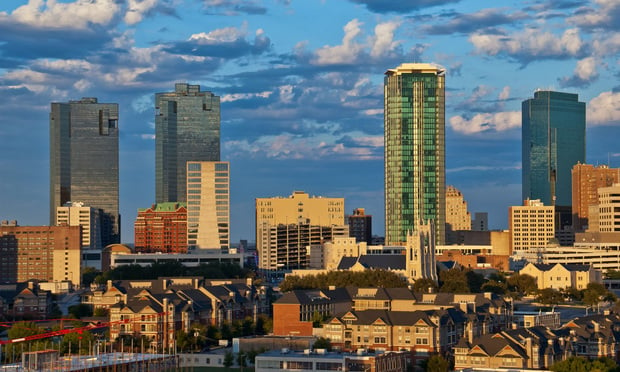
LOS ANGELES—A Health and wellness certification is the newest iteration of sustainable amenities in office space. Official known as WELL Building Standard, the certification ensures include innovative features like circadian lighting systems, healthy food access, designs for enhanced walkability and biophilic elements. CBRE's global corporate headquarters, Shangri-La Construction's headquarters, Haworth's Los Angeles showroom and IOS's downtown Los Angeles showroom are among the office spaces that already hold the certification, and there are 37 other office projects underway that are expected to secured the certification. To find out why this is becoming such a popular amenity for offices and the benefits of WELL Building Standard, we sat down with Rick Fedrizzi, Chairman and CEO of the International WELL Building Institute, for an exclusive interview.
GlobeSt.com: Why is the WELL Building Standard, also known as WELL, becoming so popular in L.A. specifically?
Rick Fedrizzi: L.A. is a longtime leader in the sustainability space, and the city has championed many of the latest trends in green building and design. With the sustainability conversation now increasingly focusing on the health and wellbeing of the people in the buildings, L.A. is again leading the charge.
GlobeSt.com: Tell me about WELL, and the features of a property that has been WELL Certified.
Fedrizzi: We believe that buildings should be developed with people's health and wellness at the center of design. We spend more than 90% of our time indoors, which means that buildings, and everything in them, can have a profound effect on human health and wellbeing. The conditions these buildings create and the activities they support or discourage affect our lives every day. From the quality of the air in a space, to the amount of daylight entering, to the “walkability” of the building location, there are many design, construction and operation decisions that can contribute to a person's wellness within the built environment.
The WELL Building Standard is the first building standard to focus exclusively on the health and wellness of the people in buildings. It marries best practices in design and construction with evidence-based medical and scientific research – harnessing the built environment as a vehicle to support human health and wellbeing. WELL sets performance requirements in seven categories relevant to a person's health and wellbeing: air, water, nourishment, light, fitness, comfort, and mind.
WELL Certified spaces include a variety of features, such as circadian lighting systems, advanced air and water purifications systems, and ergonomic design, that are designed to improve the nutrition, fitness, mood, sleep patterns and performance of building occupants.
GlobeSt.com: What is the difference between LEED and WELL Certification?
Fedrizzi: WELL works harmoniously with green building standards such as LEED and the Living Building Challenge, and is expanding alignment with other international leading green building systems like Green Star and BREEAM. While LEED sets a baseline for how green building practices can improve the health and well-being of the people in the building through access to daylight and outdoor views, active design, improved air exchange and better materials choices, WELL takes a much deeper dive into human health impacts. LEED and WELL are complements to each other because a “well” building requires a “green” building as a starting point.
GlobeSt.com: How many properties in L.A. are obtaining WELL Certification, and what has the response been from the L.A. office market?
Fedrizzi: The response from the L.A. market has been enthusiastic. To date, L.A. is home to four WELL Certified buildings and there are currently 36 additional projects registered to pursue certification. The office market has been particularly supportive. CBRE Group Inc.'s global corporate headquarters in downtown Los Angeles became the first commercial office building in the world to achieve WELL Certification through the pilot program, paving the way for others of its kind. In addition, Shangri-La Construction's Headquarters has achieved WELL Certification at the Gold Level under the pilot program, Haworth, Inc.'s Shanghai Construction Headquarters has been awarded WELL Certification at the Silver Level, and the Interior Office Solutions (IOS) Los Angeles showroom has also been WELL Certified. We continue to see great interest in this market and expect continued growth and expansion. We are also seeing a positive response from employees working in these buildings. For example, according to a post-occupancy study conducted by CBRE Group Inc. one year post move in, 92% of employees said the new space has created a positive effect on their health and well-being, 93% said that they are able to collaborate with others more easily, 94% said that the new space has had positive impact on their business performance, and 83% have felt more productive at work.

LOS ANGELES—A Health and wellness certification is the newest iteration of sustainable amenities in office space. Official known as WELL Building Standard, the certification ensures include innovative features like circadian lighting systems, healthy food access, designs for enhanced walkability and biophilic elements. CBRE's global corporate headquarters, Shangri-La Construction's headquarters, Haworth's Los Angeles showroom and IOS's downtown Los Angeles showroom are among the office spaces that already hold the certification, and there are 37 other office projects underway that are expected to secured the certification. To find out why this is becoming such a popular amenity for offices and the benefits of WELL Building Standard, we sat down with Rick Fedrizzi, Chairman and CEO of the International WELL Building Institute, for an exclusive interview.
GlobeSt.com: Why is the WELL Building Standard, also known as WELL, becoming so popular in L.A. specifically?
Rick Fedrizzi: L.A. is a longtime leader in the sustainability space, and the city has championed many of the latest trends in green building and design. With the sustainability conversation now increasingly focusing on the health and wellbeing of the people in the buildings, L.A. is again leading the charge.
GlobeSt.com: Tell me about WELL, and the features of a property that has been WELL Certified.
Fedrizzi: We believe that buildings should be developed with people's health and wellness at the center of design. We spend more than 90% of our time indoors, which means that buildings, and everything in them, can have a profound effect on human health and wellbeing. The conditions these buildings create and the activities they support or discourage affect our lives every day. From the quality of the air in a space, to the amount of daylight entering, to the “walkability” of the building location, there are many design, construction and operation decisions that can contribute to a person's wellness within the built environment.
The WELL Building Standard is the first building standard to focus exclusively on the health and wellness of the people in buildings. It marries best practices in design and construction with evidence-based medical and scientific research – harnessing the built environment as a vehicle to support human health and wellbeing. WELL sets performance requirements in seven categories relevant to a person's health and wellbeing: air, water, nourishment, light, fitness, comfort, and mind.
WELL Certified spaces include a variety of features, such as circadian lighting systems, advanced air and water purifications systems, and ergonomic design, that are designed to improve the nutrition, fitness, mood, sleep patterns and performance of building occupants.
GlobeSt.com: What is the difference between LEED and WELL Certification?
Fedrizzi: WELL works harmoniously with green building standards such as LEED and the Living Building Challenge, and is expanding alignment with other international leading green building systems like Green Star and BREEAM. While LEED sets a baseline for how green building practices can improve the health and well-being of the people in the building through access to daylight and outdoor views, active design, improved air exchange and better materials choices, WELL takes a much deeper dive into human health impacts. LEED and WELL are complements to each other because a “well” building requires a “green” building as a starting point.
GlobeSt.com: How many properties in L.A. are obtaining WELL Certification, and what has the response been from the L.A. office market?
Fedrizzi: The response from the L.A. market has been enthusiastic. To date, L.A. is home to four WELL Certified buildings and there are currently 36 additional projects registered to pursue certification. The office market has been particularly supportive.
© Touchpoint Markets, All Rights Reserved. Request academic re-use from www.copyright.com. All other uses, submit a request to [email protected]. For more inforrmation visit Asset & Logo Licensing.







